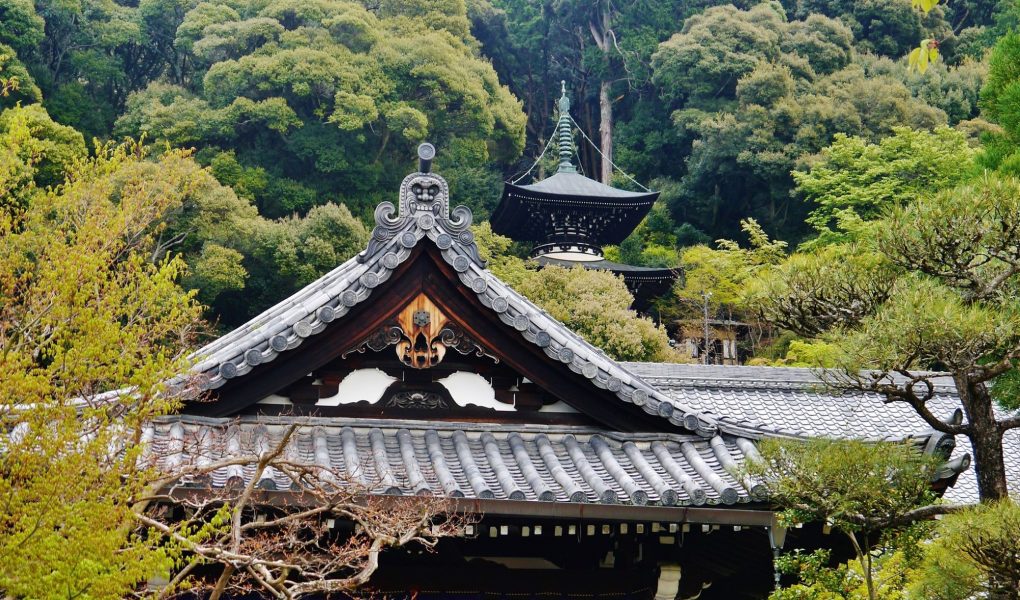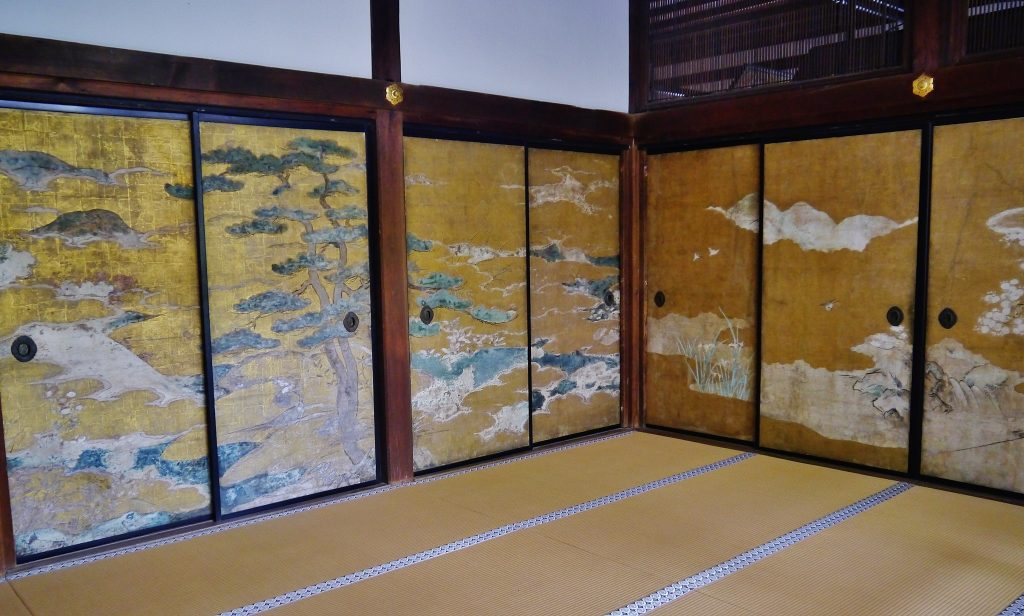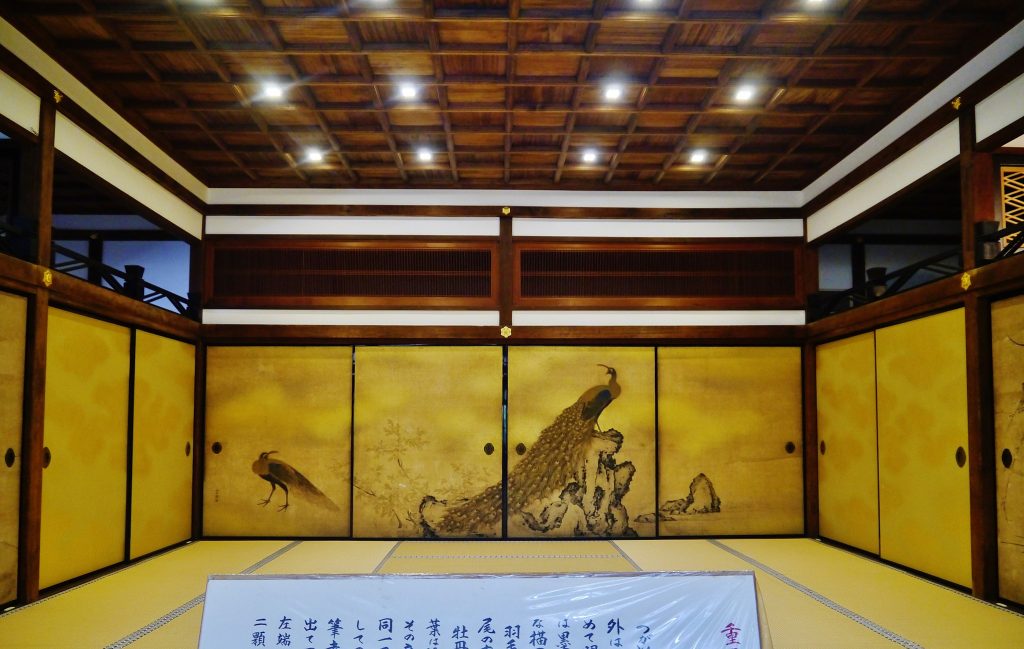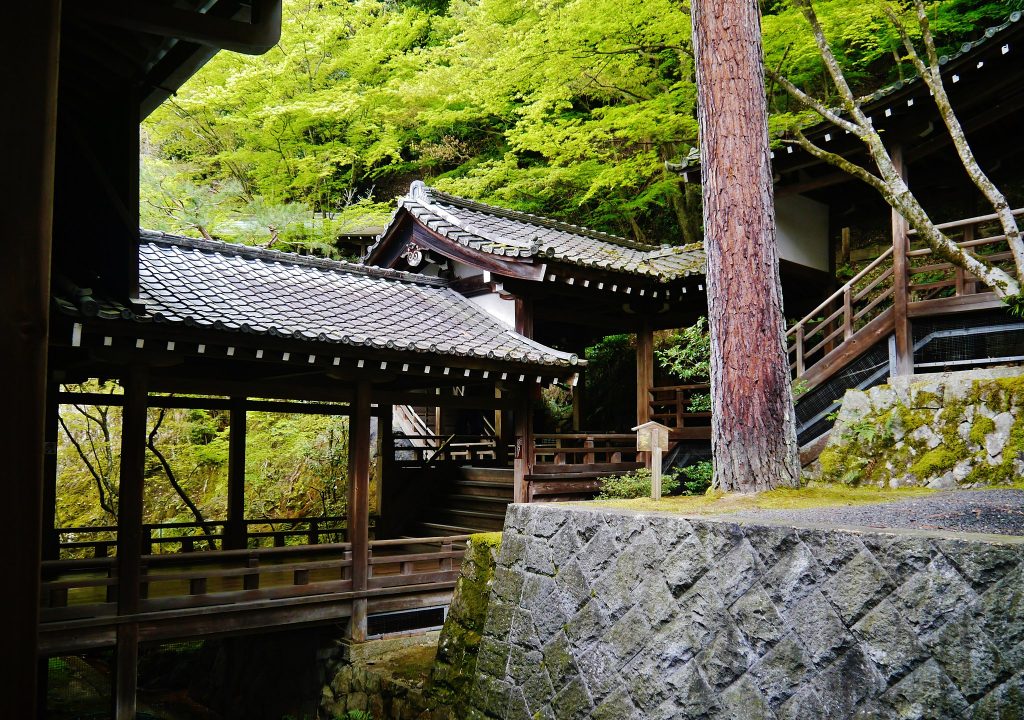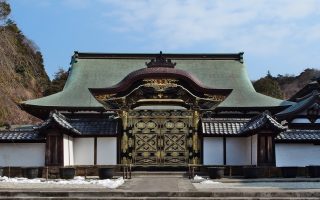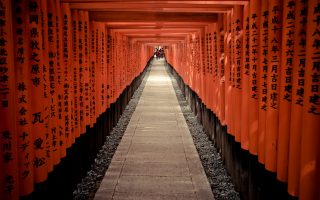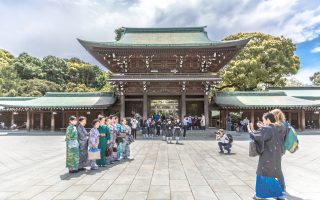Eikan-do temple, formally named Zenrin-ji, is a Pure Land buddhist temple located in Kyoto. The temple is widely famous for it’s amazing fall foliage, which attracts huge crowds of locals and tourists in November. The nick-name of “Eikan” is derived from the name (Yōkan) of one of the former head priests of the temple.
Eikan-do is located in walking distance from both Nanzen-ji temple and the end of the Philosophers Walk. The three can easily be combined.
The temple grounds have several entrances – the main gate (Korai-mon), the south gate both leading to the middle gate. An entry fee of ¥600 is due at the ticket booth by the middle gate. The temples buildings are located at different elevations, and many of the buildings are connected to each other by covered corridors and staircases, creating a unique and beautiful scene.
The main entrance, following the ticket gate, is the Kakuju-dai and Shaka-do buildings. The shaka-do is the head priests living quarters, and is beautifully decorated with painted Fusuma (sliding doors/panels). Kakuju-dai is connected to the old Hojo (main hall).
All three photos above by Zairon. Licensed under CC-SA 4.0.
In the Zuishi-den building, adjoining the Shaka-do, the Hiyoke-no-Amida can be admired. It is the last remaining statue of five, originally brought to the temple by it’s founder Shinjo. The four lost statues burned during the Onin war, but the last one survived, and now is said to protect the temple from fire.
Moving on from Shaka-do one passes through Miei-do building which is dedicated to Honen, the founder of the Jodo sect. From here, a covered walkway leads the visitor out of the building. The walkway splits after a little while, and one can choose to go right to the Amida-do building that houses the famous Amida Statue or walk left along the inclining “Garyuro” coordior, so named because it’s shape resembles a dragon.
At the end of the dragon corridor is the Kaizan-do building. From here you can exit on to the footpath, and continue to the Tahoto Pagoda at the top. The style of the Tahoto Pagoda is unique compared to other Pagodas due to it’s circular upper floor. From the pagoda there is a great view of Kyoto and the temple area.
Walking down the hill, back into the temple area, one can explore the Hojo pond and it’s beautiful surroundings. Don’t miss the Benten-shima island in the pond and the bell tower at the end of the pond, near the Amida-do.
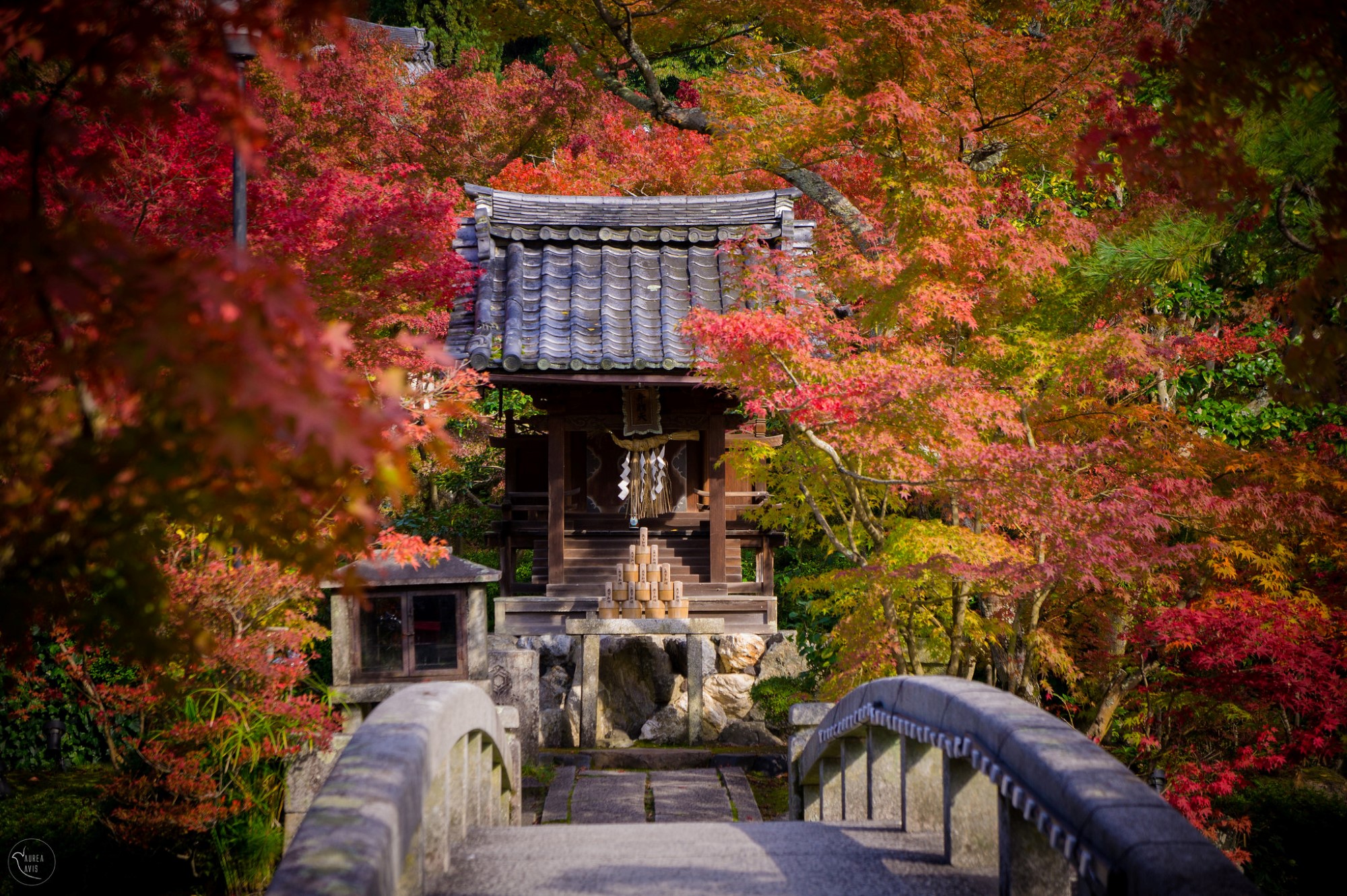
Credit: Zlatana Lecrivain of aurea-avis.com. Licensed under CC BY-ND 2.0 on flickr.com
History of Eikando
Zenrin-ji was established by a monk called Shinjo. Shinjo was a former pupil of the famous Kukai – the founder of Japanese Shingon Buddhism. Shinjo wanted to establish a temple to worship the five wisdom buddhas, and so, in 853, he purchased a mansion in Kyoto. At the time of purchase however, it was forbidden to establish temples in Kyoto. Shinjo had to wait 10 years until he was finally granted permission to build his temple by Emperor Seiwa in 863.
For the first centuries of the temples existence it represented Shingon buddhism. However, during the 1100’s and 1200’s the temple slowly changed philosophies, and started teaching Pure Land teachings as well. The momentum of the change came with Yokan (1033-1111), the seventh head of the temple – he was known as Eikan. Yokan worshipped Amitābha (Amida Buddha), a Buddha which would play a central role in Jodo buddhism when it was later established in 1175.
Yokan dedicated himself to help the sick, and so established a sort of hospital on the temple premises. According to the temples texts he planted plum trees to help feed the sick. Today there are still plum trees on the premises. The trees are called Hidenbai – the first part “hi” being derived from the Japanese word “hiden” meaning mercy.
In 1224 Eikan-do finally converted to the Jodo sect under leadership of head priest Shōon. The conversion was formalized after a series of the temples priests had been quite dedicated to Amida Buddha. They had been practicing “Nembutsu” – a defining practice of Jodo Buddhism, where one can achieve salvation solely by saying Amitābha’s name from the heart. The resulting practice of monks continuously repeating the buddhas name was therefore common practice.
The temple complex has suffered from wars over the centuries, just like most other temples in Kyoto. The Onin war (1467 – 1477) took a great toll on the Eikan-do. Reconstruction of the temple went on for many years after the war. With the Meiji era (1868-1912) Eikan-do also took great damage, as anti-buddhist movements destroyed the premises.
Today, Eikan-do has been rebuilt and stands in perfect condition in eastern Kyoto for everyone to visit.
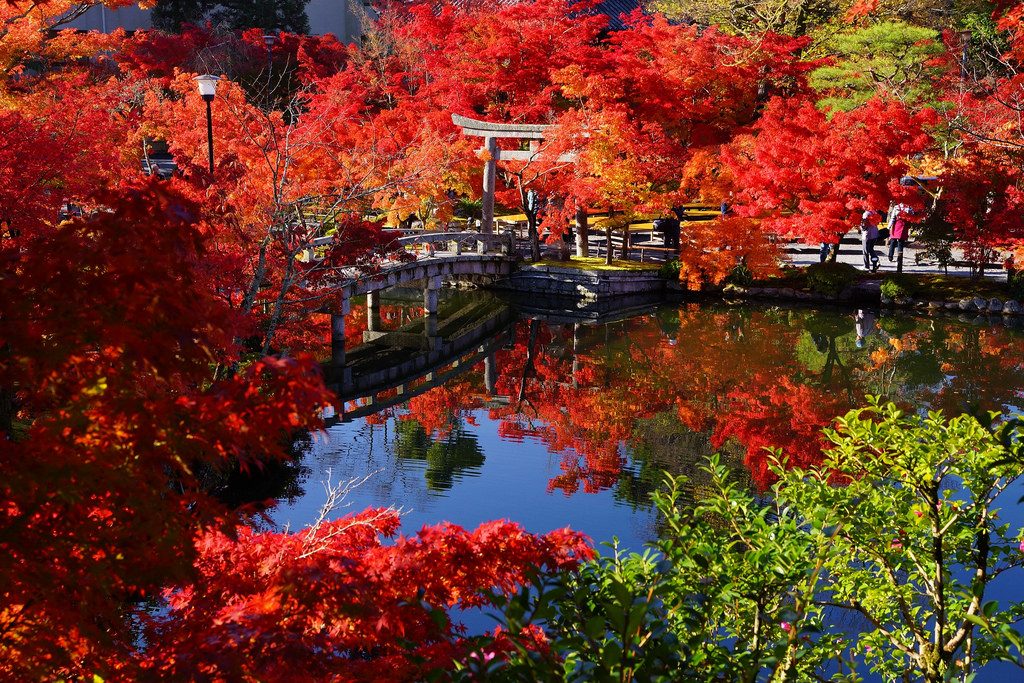
The Mikaeri Amida Statue
Eikan-do is famous for the Mikaeri Amida statue – a national treasure. The statue of the Amida Buddha is special in that the Buddha looks over the shoulder, which is very uncommon. The story goes, that one morning while Yokan was walking around the statue and practicing Nembutsu, the statue suddenly came alive and stepped down from it’s pedestal. The Amida walked in front of Yokan, then turned the head and beckoned Yokan to come, saying “Yokan, you are slow“. Yokan prayed for the statue to keep that form, and since that day the statue had it’s head turned.
Several versions and variations of this story exist – even in the temples own writings there are differences between brochures, websites and other sources. However, the essence and message remains the same in all versions.
Other explanations of the symbolism of the turned head are; the Amida waiting for people behind, the Amida reflecting on his position, showing compassion etc. The general themes tend toward leadership and compassion.
When to experience the fall foliage
The beautiful autumn leaves, which has made Eikan-do so famous today, are best viewed in November. What time of November depends a bit on the progress of the fall that specific year, but mid-November should be a good period. Expect massive crowds throughout November as Eikan-do is one of Kyoto’s prime foliage viewing locations.
Getting there
Pro tip: Traveling around Kansai? Maybe the Kansai Thru Pass is something for you. The pass is valid for busses, subways and private railways – but not for JR trains.
By bus: from Kyoto station take bus no. 5 for 35 minutes to
Nanzen-ji Eikandodo Bus Stop. From there it’s a 5 minute walk to Eikando.
By subway: Keage Station is the nearest subway station to Nanzen-ji. The Tozai Line services this station. From the station it’s a 10 minute walk to Nanzen-ji temple.
cover photo credit: Zairon. Licsend under CC-SA 4.0.

